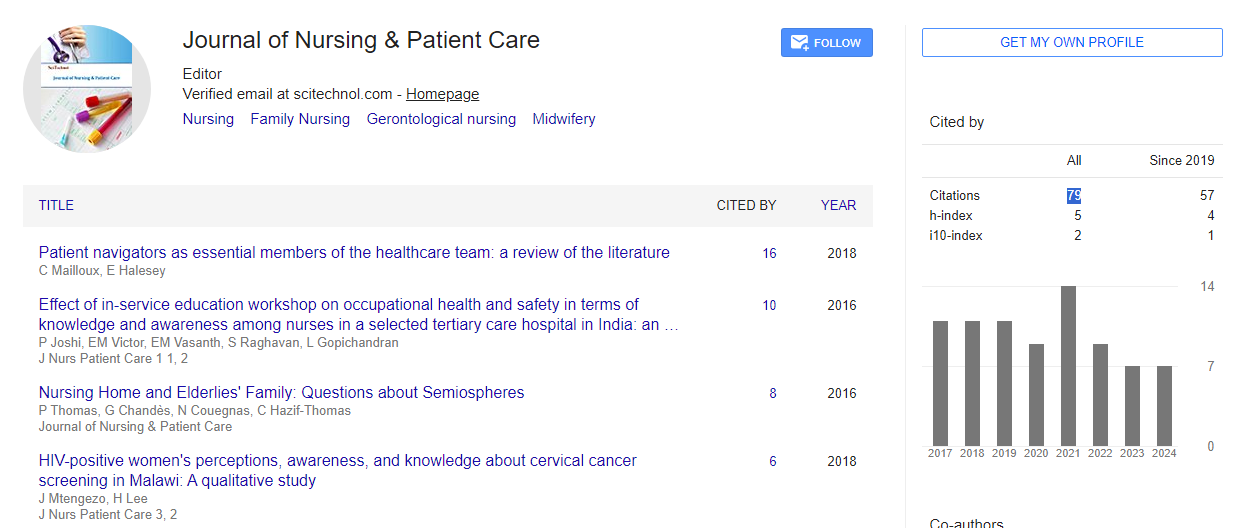Role of nurses in home blood pressure monitoring for the management of hypertension
Ching Siew Mooi
Universiti Putra Malaysia, Malaysia
: J Nurs Patient Care
Abstract
Home Blood Pressure Monitoring (HBPM) has an important role in hypertension management in view its cost and availability compared with ambulatory blood pressure monitoring. HBPM not only can detect the presence of white coat effect, marked hypertension but also more accurate in predicting cardiovascular risk especially stroke and end-stage renal disease. Studies show that patient with HBPM has a better Blood Pressure (BP) control and adherence compared with usual care, particularly if combined with other interventions like telemonitoring or education program. However, this tool may not be useful among patients with socioeconomic health barriers. Thus, additional interventions like involving the nurse in the hypertension management may be required in combination with HBPM to get the BP to target in certain populations particularly those with socioeconomic barriers to health care. Guidelines show that minimum of 12 measurements should be obtained with both morning and evening measurements taken over one week. The patient should have two measurements separated by one to two minutes in seated position in the morning and in the evening (i.e., four measurements per day) for minimum three, but preferably seven, consecutive days. The measurements at the first day should be omitted and the home BP reading is defined as the average of all remaining measurements. The same procedure of 12 measurements taken over one week should be repeated about every three months to determine whether the BP remains controlled. The accuracy of HBPM can be tested by asking patient to take the BP in the office with their home monitor and clinician measures the BP in the other arm simultaneously. Correct technique in using HBPM among nurses is important to optimize the usefulness of HBPM in improving BP control in outpatient setting.
Biography
Ching Siew Mooi is an Associate Professor in the Department of Family Medicine at the Universiti Putra Malaysia. She has obtained her Master’s degree in Family Medicine at University of Malaya. Her research interests lie in the area of non-communicable disease like blood pressure, obesity, diabetes and addiction. She has published more than 50 manuscripts in peer review journal at the national and international level. She also invited as the keynote speaker in smartphone addiction at the regional Family Medicine Specialist Association conference.
E-mail: sm_ching@upm.edu.my
 Spanish
Spanish  Chinese
Chinese  Russian
Russian  German
German  French
French  Japanese
Japanese  Portuguese
Portuguese  Hindi
Hindi 